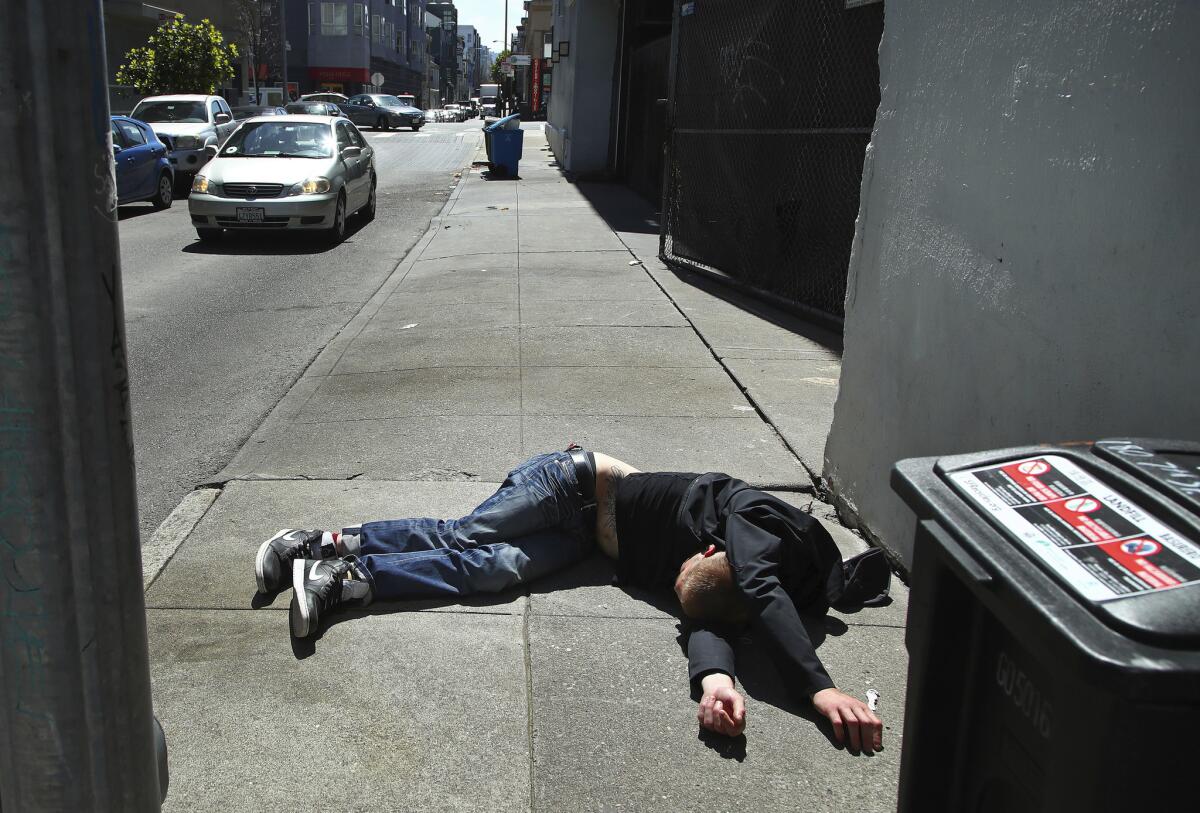Modern ‘asylums’ would be a compassionate answer for mentally ill homeless people

- Share via
The very term “homelessness,” as used to describe the problem that has changed the face of downtown Los Angeles and other West Coast cities, implies that there’s a single solution: housing. That thinking leads quickly to discussions about the high cost of real estate and the need for new approaches to the housing crisis, such as Facebook’s pledge to spend $1 billion to create affordable housing in Silicon Valley.
Too often, however, this discussion ignores the needs of a large percentage of people living on the streets who are not capable of living independently because they suffer from serious mental health problems. For some, the best form of help may be a back-to-the-future approach: state mental hospitals dedicated to serving this particular population. This would not solve the problem of people with mental illness who refuse shelter (that issue has to be addressed by involuntary commitment laws). But the fact is, there aren’t enough beds in existing facilities for the mentally ill who might need and want such services.
This is not to suggest a revival of the sprawling and often poorly run system of public mental hospitals, or asylums, that were once among the largest budget items of every state government. At their peak in the early 1950s, there were more than 500,000 state mental hospital beds in the United States, including 37,000 in California.
That figure in California has declined to some 6,000 beds in just five facilities, the result of the “deinstitutionalization” movement begun during the Kennedy administration. At their height, those institutions also housed the poor, the senile and the terminally ill who lacked health insurance. The advent of Medicare and Medicaid has addressed some of these problems.
Deinstitutionalization left behind the untreated street homeless. It’s hard to know just how many. The National Institute of Mental Health estimates that between 25 and 64 people for every 100,000 in the U.S. suffer from schizophrenia and related psychotic disorders. HUD has estimated that of a total of 553,000 homeless persons in 2018, 140,000 suffer from serious mental illness — and of those, some 43,000 are street homeless, whether living in cars or encampments.
Even these large numbers do not mean that we need to expand state mental hospitals to treat that entire population. Some really do just need housing. Such housing can also be similar to modest residences once offered by single-room occupancy “hotels.” A small but clean room with a shared bathroom and kitchen could be what many would prefer. Others will be able to live in “supportive housing,” with on-site help and supervision to ensure that important medications are taken. But some — including a tiny minority prone to violent outbursts — could be better served in public mental health hospitals that provided more intensive monitoring. Nor would long-term hospitalization have to be the norm in light of healthcare advances since the height of the asylum era.
The old asylums in popular culture, depicted in movies like “One Flew Over the Cuckoo’s Nest” and “The Snake Pit,” were prisons where people were warehoused and forgotten. But not all asylums were hellholes, certainly not when many were first built in the first three decades of the 20th century.
Those who believe that government can be an effective means for society to express compassion should not rule out the possibility that state mental hospitals can be safe, sanitary and clinically effective — and part of the tool kit for addressing the current epidemic of street homelessness.
Howard Husock is a senior fellow at the Manhattan Institute and the author of “Who Killed Civil Society? The Rise of Big Government and Decline of Bourgeois Norms.”
More to Read
A cure for the common opinion
Get thought-provoking perspectives with our weekly newsletter.
You may occasionally receive promotional content from the Los Angeles Times.






